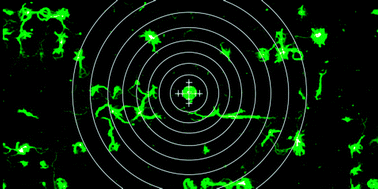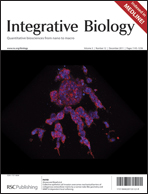The nervous system is a complex, highly-ordered, integrated network of cells. Dispersed cultures of neurons enable investigations into intrinsic cellular functions without the complexities inherent in the intact nervous system. This culture process generates a homogeneously dispersed population that is assumed to be spatially random. Despite the vast number of studies utilizing dispersed neurons, few studies address the spatial distribution of large populations of neurons, in vitro. We used ink-jet printing and surface chemistry to define patterned areas of poly-lysine adhesion (∼50 μm spots) juxtaposed against a fluorinated-silane background. We quantitatively analysed populations of patterned neurons on printed protein spots, and unpatterned neurons. Using a microarray scanner, we acquired large images (72 mm × 22 mm) of patterns, and neurons with and without patterns. Fast Fourier transformation (FFT) image analysis was used to determine global alignment of neurons to patterns. Through point pattern analysis, we described the spatial organization of dispersed neurons with, or without, patterned substrates. Patterned neurons show spatial organization characteristics reminiscent of printed patterns, with spatial distributions representative of unpatterned neurons. Most notably, both patterned and unpatterned neurons show departure from null models of complete spatial randomness (CSR; a homogeneous Poisson process) at shorter distances with conformity to CSR occurring at longer distances. Cellular morphometrics show that when compared to their unpatterned counterparts, spot-patterned neurons exhibit a significant increase (p < 0.0001) in the mean dendritic circularity and an increase in the number of more circular neurons. Through neurite tracing, we show that dendritic processes are also highly confined to patterned areas, and that they are on average 58% shorter than dendrites of neurons without patterns. Our findings show that patterned areas change the spatial organization of the somata and dendrites of cultured neurons, and that traditional neuronal cultures deviate from CSR.


 Please wait while we load your content...
Please wait while we load your content...